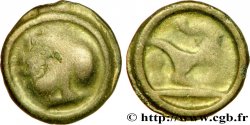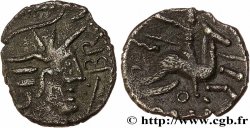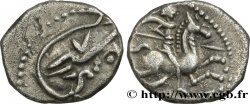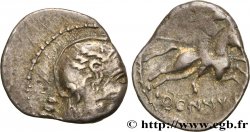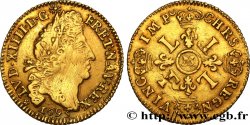Live auction - bga_635833 - GALLIA - RHONE VALLEY Obole DVRNA AVSC
You must signin and be an approved bidder to bid, LOGIN TO BID. Accounts are subject to approval and the approval process takes place within 48 hours. Do not wait until the day a sale closes to register. Clicking on "BID" constitutes acceptance of the terms of use of cgb.fr private live auctions.
Bids must be placed in whole Euro amounts only. The sale will start closing at the time stated on the item description; any bids received at the site after the closing time will not be executed. Transmission times may vary and bids could be rejected if you wait until the last second. For further information check the Live auction FAQ
All winning bids are subject to a 18% buyer’s fee.
All winning bids are subject to a 18% buyer’s fee.
| Estimate : | 500 € |
| Price : | 380 € |
| Maximum bid : | 380 € |
| End of the sale : | 26 January 2021 16:20:39 |
| bidders : | 3 bidders |
Type : Obole DVRNA AVSC
Date: c. 40 AC.
Metal : silver
Diameter : 10 mm
Weight : 0,34 g.
Rarity : R3
Coments on the condition:
Belle monnaie avec les légendes bien visibles. Patine grise
Obverse
Obverse legend : DVRNA.
Obverse description : Tête à gauche, imitée de l’obole de Marseille ; légende devant le visage.
Reverse
Reverse legend : A V S C.
Reverse description : dans les quatre cantons d’une rouelle.
Commentary
Cette très rare obole est à rapprocher des deniers DVRNACOS - AVSCROCOS (LT. 5762, 5774 et 5779). Sur les 17 exemplaires répertoriés dans le Moneta, aucun ne provient de vente. Plusieurs exemplaires sont pourtant passés en vente ces dernières années. Dans le Nouvel Atlas, les auteurs classent cette obole dans la série 872 "divisions allobroges imitées de Marseille", de même que les oboles RIGA et MAOS. L'exemplaire n° 600 de MONNAIES XXVI, avec seulement le C du revers, a été vendu 450€ sur un ordre de 755€.
La petite dépression devant le visage pourrait être un coup de poinçon (?).
This very rare obol should be compared to the DVRNACOS - AVSCROCOS deniers (LT. 5762, 5774 and 5779). Of the 17 examples listed in the Moneta, none came from sale. However, several examples have gone on sale in recent years. In the New Atlas, the authors classify this obol in series 872 \\\"allobroge divisions imitated from Marseille\\\", as well as the RIGA and MAOS obols. Copy no. 600 of MONNAIES XXVI, with only the C on the reverse, was sold for €450 on an order of €755. The small depression in front of the face could be a punch (?)
La petite dépression devant le visage pourrait être un coup de poinçon (?).
This very rare obol should be compared to the DVRNACOS - AVSCROCOS deniers (LT. 5762, 5774 and 5779). Of the 17 examples listed in the Moneta, none came from sale. However, several examples have gone on sale in recent years. In the New Atlas, the authors classify this obol in series 872 \\\"allobroge divisions imitated from Marseille\\\", as well as the RIGA and MAOS obols. Copy no. 600 of MONNAIES XXVI, with only the C on the reverse, was sold for €450 on an order of €755. The small depression in front of the face could be a punch (?)







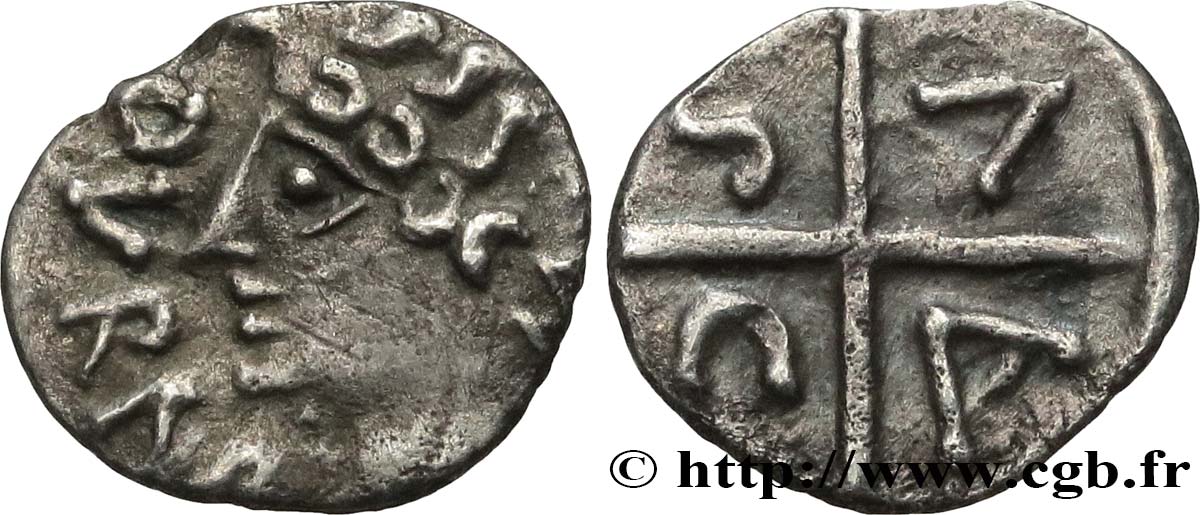
 Report a mistake
Report a mistake Print the page
Print the page Share my selection
Share my selection Ask a question
Ask a question Consign / sell
Consign / sell
 Full data
Full data